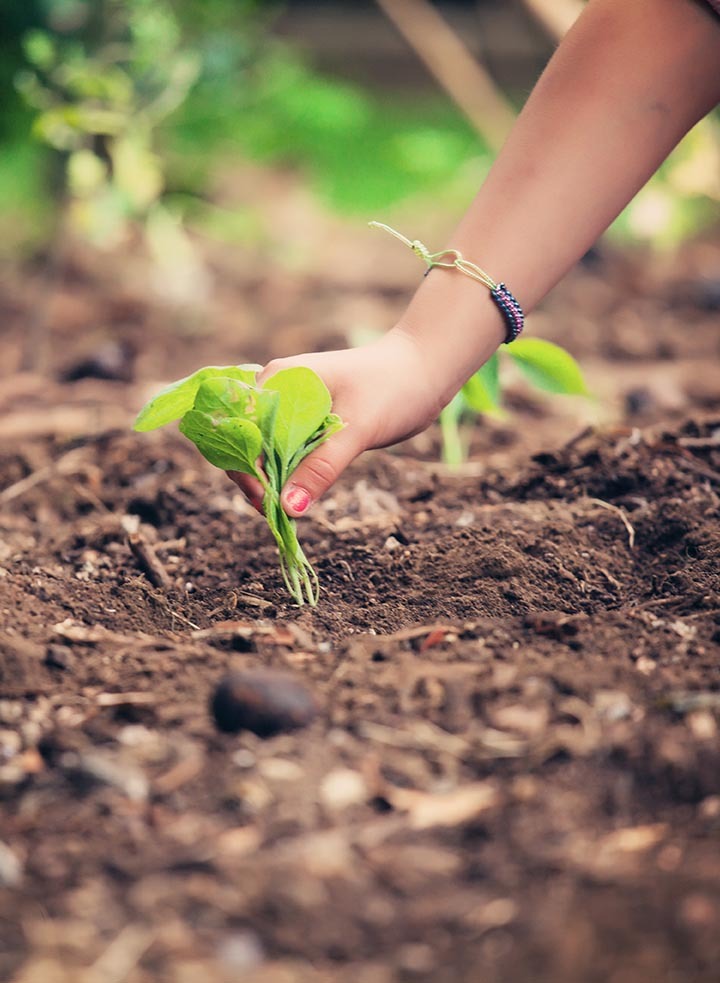- Homepage
- >
- Plant-based Food & lifestyle
- >
- Nutrients
- >
- Preventing iron deficiency with iron-rich foods
Preventing iron deficiency with iron-rich foods

People who follow a vegan/vegetarian diet enjoy various health benefits. But no matter which diet one chooses, it is important to supply the body with all essential nutrients. Of all nutrient deficiencies, iron deficiency is the most common. ProVeg explains how daily iron requirements can best be met with healthy, plant-based foods.
What is iron?
Iron is a trace element that is essential for various bodily functions. Deposits of iron are stored as ferritin in the liver, spleen, intestinal epithelium, and bone marrow. Ferritin is a protein complex that accounts for roughly 25% of the iron stored in the human body.[1]Heinrich, P. C. et al. (2014): Löffler/Petrides Biochemie und Pathobiochemie. Springer, p. 736–780 Since our bodies cannot produce iron, it has to be ingested in sufficient quantities through food.[2]UCFS Health: Hemoglobin and Functions of Iron. Available at https://www.ucsfhealth.org/education/hemoglobin_and_functions_of_iron/ [05.03.2018]
Functions of iron
Up to 80% of absorbed iron is used for the synthesis of haemoglobin (a protein in red blood cells), which is responsible for the transport of oxygen in the body.[3]Collings, R. et al. (2013): The absorption of iron from whole diets: a systematic review. Am J Clin Nutr. 98, p. 65–81 As a component of haemoglobin, iron is used to store oxygen in the muscles. Iron also plays an important role in the supply of energy within cells and is involved in the production of hormones and other messenger molecules.[4]Heinrich, P. C. et al. (2014): Löffler/Petrides Biochemie und Pathobiochemie. Springer, p. 739
Daily iron requirements vary by individual needs
The amount of iron regularly needed by the body depends on age, sex, and personal circumstances. Pregnant and breastfeeding women, in particular, have an increased need for iron, as do adolescents. Experts advise supplementing iron in case of deficiency or during and after pregnancy.[5]WHO (2004): Vitamin and mineral requirements in human nutrition. pp. 264 [05.03.2018] Although iron is essential for the human body’s processes, too much iron is toxic. Iron supplements should always be used responsibly and in accordance with medical advice. The World Health Organization (WHO) recommends that the following amounts of iron be consumed daily:[6]BfR (2008): Fragen und Antworten zu Eisen in Lebensmitteln. Available at http://www.bfr.bund.de/cm/343/fragen_und_antworten_zu_eisen_in_lebensmitteln.pdf [05.03.2018] [7]WHO (2004): Vitamin and mineral requirements in human nutrition. p.271 [05.03.2018]
| Group | Iron Requirements |
| Breastfeeding and pregnant women | 20-30 mg |
| Women before menopause | 19.6 mg |
| Women after menopause | 7.5 mg |
| Men | 9.1 mg |
| Infants less than a year old | 6.2 mg |
| Children 1 and 10 years old | 3.9-12.5 mg |
| Male adolescents between 11 and 17 years old | 9.7-12.5 mg |
| Female adolescents between 11 and 14 years old (prior to first menstruation) | 9.3 mg |
| Female adolescents between 11 and 14 years old (after first menstruation) | 21.8 mg |
Table 1: Iron requirements
Iron deficiency: symptoms and consequences
Iron deficiency is the most common nutrient deficiency worldwide. According to the World Health Organization, about 30% of the human population – or around two billion people – suffer from iron deficiency.[8]WHO: Micronutrient deficiencies. Available at http://www.who.int/nutrition/topics/ida/en/ [05.03.2018]
A deficiency of this vital trace element can be triggered by infection, severe blood loss (for example, from surgery or blood donation), and also through the regular use of painkillers. Insufficient intake of iron or poor absorption rates can also lead to iron deficiency.[9]WHO: Micronutrient deficiencies. Available at http://www.who.int/nutrition/topics/ida/en/ [05.03.2018] If there is not enough iron available to the body, it uses its stores of iron instead. This phase is asymptomatic. Fewer new red blood cells – or erythrocytes – can be formed and the enzymes that are dependent on iron reduce their activity.
Common symptoms of iron deficiency are fatigue, dizziness, hair loss, and headaches. Other characteristics include changes of the oral mucosa and oesophagus, as well as brittle nails. If inadequate iron supply persists for an extended period of time, there is a risk of iron-deficiency anaemia. Disorders of the immune and nervous systems, the thyroid gland, and the regulation of body temperature are all symptoms of iron-deficiency anaemia.[10]NHLBI: Iron-Deficiency Anemia. Available at https://www.nhlbi.nih.gov/health-topics/iron-deficiency-anemia [05.03.2018]
Detecting iron deficiency: Blood count and blood values
Anyone suffering from symptoms of iron deficiency should seek medical treatment. Since iron deficiency can be detected via a blood test, a complete blood count should be done in addition to a serum ferritin test. Levels of erythrocytes and haemoglobin indicate how much iron is present in the blood. Serum ferritin levels, on the other hand, correlate with iron storage levels. The following table shows the reference ranges of blood values:[11]Ledochowski, M. (2010): Klinische Ernährungsmedizin. Springer-Verlag Vienna, p. 276 [12]NCBI (1990): Clinical Methods: The History, Physical, and Laboratory Examinations https://www.ncbi.nlm.nih.gov/books/NBK259/ [05.03.2018] [13]Mayo Clinic: Complete Blood Count. Available at https://www.mayoclinic.org/tests-procedures/complete-blood-count/about/pac-20384919 [05.03.2018]
| Men | Women | |
| Ferritin (iron stores) | 30-300 mg/litre | 30-300 mg/litre |
| Haemoglobin (red blood pigment) | 14-18 grams/decilitre | 12-16 grams/decilitre |
| Erythrocytes (red blood cells) | 4.3-5.9 million/microlitre | 3.9-5 million/microlitre |
Table 2: Normal values of blood iron
Meeting iron requirements through iron-rich foods
Mild cases of iron deficiency can be remedied by eating iron-rich food. Although animal products are considered to be particularly rich in iron, plant-based foods are also valuable sources. Amaranth, quinoa, and wholemeal flour, for example, are high on the list of iron-containing foods. In the nuts and seeds category, sesame seeds are the frontrunners, followed by sunflower seeds, pine nuts, and almonds. Pulses such as kidney beans, lentils, and chickpeas are also rich in iron. The following table indicates the iron content of various vegan foods:[14]USDA: USDA Food Composition Databases. Available at https://ndb.nal.usda.gov/ndb/search/list [05.03.2018]
| Foods | Iron content(mg/100 g) | Foods | Iron content(mg/100 g) |
| Legumes | Cereals and pseudocereals | ||
| Red lentils, dried | 7.4 | Amaranth | 7.6 |
| Kidney beans, dried | 6.7 | Quinoa | 4.6 |
| Chickpeas, dried | 4.3 | Wholegrain wheat flour | 3.6 |
| Nuts and seeds | Vegetables | ||
| Sesame seeds | 14.5 | Spinach | 2.7 |
| Sunflower seeds | 8.8 | Lamb’s lettuce | 2.2 |
| Almonds | 3.7 | Fennel | 0.7 |
| Herbs and spices | Fruits | ||
| Cardamom | 14 | Peaches, dried | 4 |
| Cinnamon | 8.3 | Black currants | 1.5 |
| Parsley | 6.2 | Apples, dried | 1.4 |
Table 3: Iron content of various plant-based foods
Plant-based iron versus iron of animal origin
There are two different types of iron in our food: haem iron, which is found only in animal products, and non-haem iron, which can be found in both plant and animal products.[15]Hurrell, R. & I. Egli (2010): Iron bioavailability and dietary reference values. Am. J. Clin. Nutr. 91, p. 1461S–1467S. Available at http://ajcn.nutrition.org/content/91/5/1461S.full.pdf+html … Continue reading While haem iron can be directly absorbed in the intestine, non-haem iron has to be converted first.[16]Heinrich, P. C. et al. (2014): Löffler/Petrides Biochemie und Pathobiochemie. Springer, p. 736-780 The bioavailability of iron – how fast and how much of the trace element enters the bloodstream – is therefore different for the two different types. Haem iron has a bioavailability of 14-18%, whereas non-haem iron’s bioavailability is 5-12%.[17]Hurrell, R. & I. Egli (2010): Iron bioavailability and dietary reference values. Am. J. Clin. Nutr. 91, p. 1461S–1467S. Available at http://ajcn.nutrition.org/content/91/5/1461S.full.pdf+html … Continue reading
Haem iron increases cancer risk
The haem iron contained in animal products undergoes a reaction with hydrogen peroxide in the body, which produces damaging oxygen radicals. This can lead to changes in DNA, thus promoting the development of cancer. Consuming 100 g of red meat a day increases the risk of developing colorectal cancer by 17%. As little as 50 g of processed meat per day increases the probability of colorectal cancer by 18%. For this reason, in 2015, the World Health Organisation classified processed meat, such as sausages and ham, as carcinogenic, and red meat, such as pork, beef, lamb, and game, as potentially carcinogenic.[18]ÖAZ (2016): Krebsrisiko durch Fleisch. Available at … Continue reading
Health benefits of vegan sources of iron
People who completely or partially eliminate animal foods from their diet consume less cholesterol and smaller amounts of bad saturated fatty acids. With a plant-based diet, the risk of cancer caused by haem iron can be substantially reduced. On top of that, a vegan-vegetarian lifestyle often goes hand in hand with lower BMI (body mass index) and reduced blood pressure levels. Overall, a plant-based diet is very beneficial to health.[19]Harvard Health Publishing (2009): Becoming a vegetarian. Available at https://www.health.harvard.edu/staying-healthy/becoming-a-vegetarian [05.03.2018]
Iron absorption inhibitors
The absorption of iron can be inhibited by certain components of food, such as phytic acid or polyphenols. This means that coffee, black tea, and wine should not be consumed in conjunction with iron-rich foods. Due to their high calcium content, dairy products and eggs also have a negative effect on the absorption of iron.[20]Harvard Health Publishing (2009): Becoming a vegetarian. Available at https://www.health.harvard.edu/staying-healthy/becoming-a-vegetarian [05.03.2018],[21]Lim, K. H. C. et al. (2013): Iron and Zinc Nutrition in the Economically-Developed World: A Review. Nutrients. 5, p. 3184–3211. Available at https://www.ncbi.nlm.nih.gov/pmc/articles/PMC3775249/ … Continue reading
Improving iron absorption
Certain methods of preparation, as well as combining certain foods, facilitate increased iron absorption and thus reduce the risk of iron deficiency.[22]Hurrell, R. & I. Egli (2010): Iron bioavailability and dietary reference values. Am J Clin Nutr. 91, p. 1461S–1467S. Available at http://ajcn.nutrition.org/content/91/5/1461S.full.pdf+html … Continue reading To increase the intake of iron from plant sources, iron-rich foods should be eaten together with foods containing organic acids. Examples include fruit such as apricots, which are rich in malic acid, and currants, which provide a lot of citric acid. The presence of these acids can triple bioavailability and, if consumed in sufficient quantities, even reverse the inhibitory effects of phytic acid and polyphenol.
Fruits and vegetables with a high content of vitamin C also promote iron absorption. As such, lemons, limes, and peppers are well-suited companions to iron-rich food. Sources of vitamin C should only be added after cooking since it is sensitive to heat. Garlic and onions also have properties that increase bioavailability.[23]Ledochowski, M. (2010): Klinische Ernährungsmedizin. Springer-Verlag Vienna, p. 278. [24]Ekmekcioglu, C. & W. Marktl (2006): Essenzielle Spurenelemente Klinik und Ernährungsmedizin. Springer Vienna : Springer e-books, p. 13. In addition to the specific combination of ingredients that improve iron absorption, the preparation of iron-containing food sources also plays an important role. Heating or fermenting iron-rich food increases bioavailability, while sprouting and malting have the same effect.[25]Platel, K. & K. Srinivasan (2016): Bioavailability of Micronutrients from Plant Foods: An Update. Crit Rev Food Sci Nutr. 56, p. 1608–1619
Getting enough iron on a vegan/vegetarian diet
While the iron stores of people on a vegan or vegetarian diet may often be lower than those of people eating animal products – mainly due to the lower bioavailability of plant iron – they are still within a normal range.[26]Haider, L. M. et al. (2016): The effect of vegetarian diets on iron status in adults: A systematic review and meta-analysis. Crit Rev Food Sci Nutr. p. 1–16. Available at … Continue reading The human body self-regulates how much iron it absorbs from plant sources and thus avoids excess iron. Iron that has already been absorbed, on the other hand, cannot be broken down and instead accumulates in the body.[27]Nutrition Facts: Heme Iron. Available at https://nutritionfacts.org/topics/heme-iron/ [05.03.2018] According to new findings, iron levels in the lower normal range are classified as health-promoting, while high iron storage levels can increase the risk of diseases such as atherosclerosis, cardiovascular diseases, and cancer, as well as disorders of the immune system.[28]Michael Greger M.D. FACLM (2015): Heme Iron. Available at https://nutritionfacts.org/topics/heme-iron/ [05.03.2018] [29]Michael Greger M.D. FACLM (2015): The Safety of Heme vs. Non-Heme Iron. Available at https://nutritionfacts.org/video/the-safety-of-heme-vs-non-heme-iron/ [05.03.2018] [30]Walker, E. M. Jr. und Walker, S. M. (2000): Effects of iron overload on the immune system. Available at https://www.ncbi.nlm.nih.gov/pubmed/11045759 [05.03.2018]]
Regardless of diet, women tend to suffer from iron deficiency far more frequently than men. Various studies have come to the conclusion that the level of menstrual blood loss, as opposed to diet, is the decisive factor for iron levels in women.[31]Br J Nutr. (2005): Impact of menstrual blood loss and diet on iron deficiency among women in the UK. Available at https://www.ncbi.nlm.nih.gov/pubmed/16197581 [05.03.2018] People who follow a healthy, varied diet and consume iron-rich vegan food can usually combat iron deficiency without taking supplements.
ProVeg tips for optimal iron supply
- Incorporate various iron-rich foods (such as amaranth, lentils, parsley, and sesame seeds) into your daily diet.
- Combine vegan sources of iron with foods that promote iron absorption, such as fruits and vegetables with high vitamin C or citric or malic acid content, as well as onions and garlic.
- Heat, ferment, sprout, or malt iron-containing foods in order to promote optimal iron absorption.
- If you suspect that you are iron deficient, have your doctor do a blood test to determine your iron levels.
Pro Health
These are general nutrition guidelines. If you have concerns about your diet, please talk to your doctor about seeing a dietitian. Discussing the use of supplements with a health professional will help to ensure that they are suitable for you. Never stop taking prescribed medications without first talking to your doctor.
References[+]
| ↑1 | Heinrich, P. C. et al. (2014): Löffler/Petrides Biochemie und Pathobiochemie. Springer, p. 736–780 |
|---|---|
| ↑2 | UCFS Health: Hemoglobin and Functions of Iron. Available at https://www.ucsfhealth.org/education/hemoglobin_and_functions_of_iron/ [05.03.2018] |
| ↑3 | Collings, R. et al. (2013): The absorption of iron from whole diets: a systematic review. Am J Clin Nutr. 98, p. 65–81 |
| ↑4 | Heinrich, P. C. et al. (2014): Löffler/Petrides Biochemie und Pathobiochemie. Springer, p. 739 |
| ↑5 | WHO (2004): Vitamin and mineral requirements in human nutrition. pp. 264 [05.03.2018] |
| ↑6 | BfR (2008): Fragen und Antworten zu Eisen in Lebensmitteln. Available at http://www.bfr.bund.de/cm/343/fragen_und_antworten_zu_eisen_in_lebensmitteln.pdf [05.03.2018] |
| ↑7 | WHO (2004): Vitamin and mineral requirements in human nutrition. p.271 [05.03.2018] |
| ↑8, ↑9 | WHO: Micronutrient deficiencies. Available at http://www.who.int/nutrition/topics/ida/en/ [05.03.2018] |
| ↑10 | NHLBI: Iron-Deficiency Anemia. Available at https://www.nhlbi.nih.gov/health-topics/iron-deficiency-anemia [05.03.2018] |
| ↑11 | Ledochowski, M. (2010): Klinische Ernährungsmedizin. Springer-Verlag Vienna, p. 276 |
| ↑12 | NCBI (1990): Clinical Methods: The History, Physical, and Laboratory Examinations https://www.ncbi.nlm.nih.gov/books/NBK259/ [05.03.2018] |
| ↑13 | Mayo Clinic: Complete Blood Count. Available at https://www.mayoclinic.org/tests-procedures/complete-blood-count/about/pac-20384919 [05.03.2018] |
| ↑14 | USDA: USDA Food Composition Databases. Available at https://ndb.nal.usda.gov/ndb/search/list [05.03.2018] |
| ↑15, ↑17 | Hurrell, R. & I. Egli (2010): Iron bioavailability and dietary reference values. Am. J. Clin. Nutr. 91, p. 1461S–1467S. Available at http://ajcn.nutrition.org/content/91/5/1461S.full.pdf+html [05.03.2018] |
| ↑16 | Heinrich, P. C. et al. (2014): Löffler/Petrides Biochemie und Pathobiochemie. Springer, p. 736-780 |
| ↑18 | ÖAZ (2016): Krebsrisiko durch Fleisch. Available at http://www.aerztezeitung.at/archiv/oeaez-2016/oeaez-12-25012016/krebsrisiko-fleisch-darmkrebs-who-univ-prof-kurt-widhalm-univ-prof-christoph-gasche.html [05.03.2018] |
| ↑19, ↑20 | Harvard Health Publishing (2009): Becoming a vegetarian. Available at https://www.health.harvard.edu/staying-healthy/becoming-a-vegetarian [05.03.2018] |
| ↑21 | Lim, K. H. C. et al. (2013): Iron and Zinc Nutrition in the Economically-Developed World: A Review. Nutrients. 5, p. 3184–3211. Available at https://www.ncbi.nlm.nih.gov/pmc/articles/PMC3775249/ [05.03.2018] |
| ↑22 | Hurrell, R. & I. Egli (2010): Iron bioavailability and dietary reference values. Am J Clin Nutr. 91, p. 1461S–1467S. Available at http://ajcn.nutrition.org/content/91/5/1461S.full.pdf+html [05.03.2018] |
| ↑23 | Ledochowski, M. (2010): Klinische Ernährungsmedizin. Springer-Verlag Vienna, p. 278. |
| ↑24 | Ekmekcioglu, C. & W. Marktl (2006): Essenzielle Spurenelemente Klinik und Ernährungsmedizin. Springer Vienna : Springer e-books, p. 13. |
| ↑25 | Platel, K. & K. Srinivasan (2016): Bioavailability of Micronutrients from Plant Foods: An Update. Crit Rev Food Sci Nutr. 56, p. 1608–1619 |
| ↑26 | Haider, L. M. et al. (2016): The effect of vegetarian diets on iron status in adults: A systematic review and meta-analysis. Crit Rev Food Sci Nutr. p. 1–16. Available at https://www.ncbi.nlm.nih.gov/pubmed/27880062 [05.03.2018] |
| ↑27 | Nutrition Facts: Heme Iron. Available at https://nutritionfacts.org/topics/heme-iron/ [05.03.2018] |
| ↑28 | Michael Greger M.D. FACLM (2015): Heme Iron. Available at https://nutritionfacts.org/topics/heme-iron/ [05.03.2018] |
| ↑29 | Michael Greger M.D. FACLM (2015): The Safety of Heme vs. Non-Heme Iron. Available at https://nutritionfacts.org/video/the-safety-of-heme-vs-non-heme-iron/ [05.03.2018] |
| ↑30 | Walker, E. M. Jr. und Walker, S. M. (2000): Effects of iron overload on the immune system. Available at https://www.ncbi.nlm.nih.gov/pubmed/11045759 [05.03.2018]] |
| ↑31 | Br J Nutr. (2005): Impact of menstrual blood loss and diet on iron deficiency among women in the UK. Available at https://www.ncbi.nlm.nih.gov/pubmed/16197581 [05.03.2018] |


